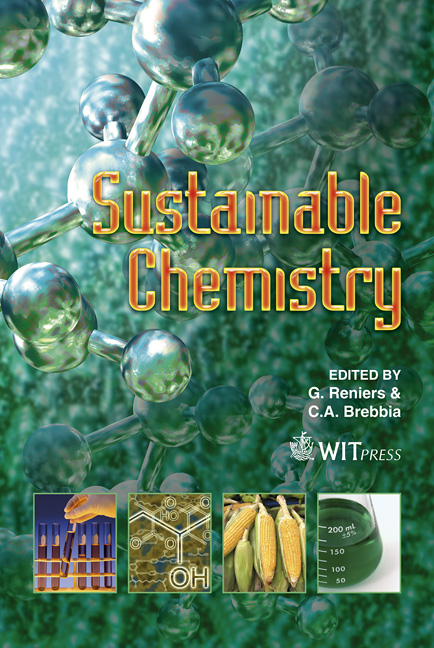Strong Bond Cleavage Promoted By Silyl Group Migration In A Coordination Sphere
Price
Free (open access)
Transaction
Volume
154
Pages
12
Page Range
117 - 128
Published
2011
Size
628 kb
Paper DOI
10.2495/CHEM110121
Copyright
WIT Press
Author(s)
H. Nakazawa
Abstract
C-CN bond cleavage in organonitriles was attained in the photoreaction with HSiEt3 in the presence of a catalytic amount of (5-C5H5)Fe(CO)2Me. The reaction sequence was proposed, where silyl migration from Fe to N in the coordinating nitrile is a key step. DFT calculations proposed a silyl migration with small activation energy of 4.0 kcal/mol and subsequent C-CN bond cleavage on the Fe coordination sphere. N-CN bond cleavage in cyanamide (R2NCN) was also attained by a transition metal catalyst. A catalytic cycle was proposed where a silyl migration from a transition metal to the nitrile nitrogen is involved. An N-silylated 2-amidino complex was isolated, which was shown to be an intermediate in the catalytic pathway. Keywords: C-C bond cleavage, C-N bond cleavage, transition metal catalysis, silyl migration. 1 Introduction Investigations of selective bond cleavage as well as selective bond formation of chemical compounds is important from the viewpoint of atom efficiency, low environmental load, and sustainable chemistry. Weak bond cleavage is not so difficult, whereas strong bond cleavage with keeping weak bonds intact is quite difficult. Therefore, selective strong bond cleavage is a challenging topic in chemistry. One of the promising ways to overcome the difficulties is using a transition metal catalyst. As the carbon-carbon bond is relatively unreactive, C-C bond cleavage is an area of considerable current interest [1]. In particular, C-C bond activation in
Keywords
C-C bond cleavage, C-N bond cleavage, transition metal catalysis, silyl migration





